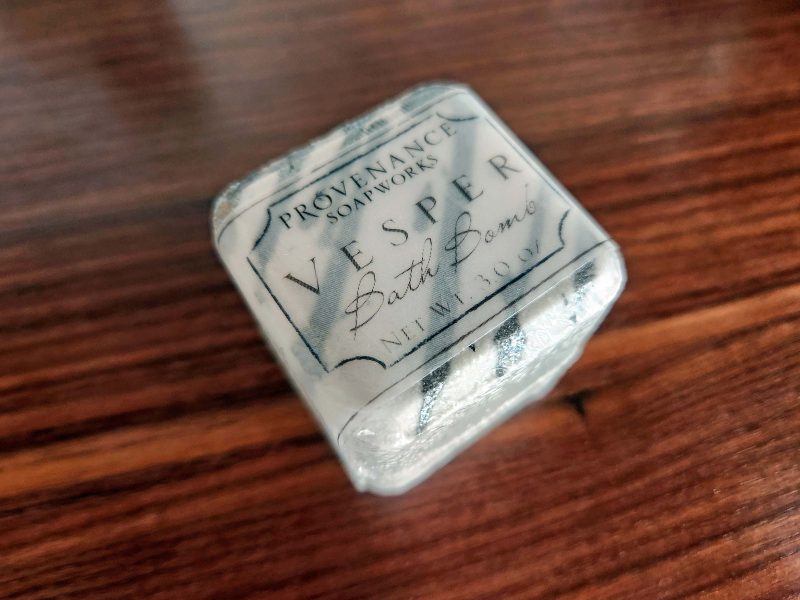Today, our ship was docked at Marseille, France, but Ted and I chose a shore excursion to Saint-Rémy-de-Provence to walk “In the Footsteps of van Gogh.” Ted and I were second-guessing ourselves about choosing this excursion, but we stuck with our plans and it turned out to be a good thing.
The village of St. Rémy is a place that I think would be very nice to live. It’s attractive, has lots of small businesses, and is small enough to meet and greet friends. Or maybe it was just a relief to be away from all those places we’ve visited that were overwhelmingly crowded. Whatever, we had to travel through some of the countryside of Provence, a province in the southeast corner of France, to get from the dock to Saint Rémy. The Alpilles Mountains are in the background.
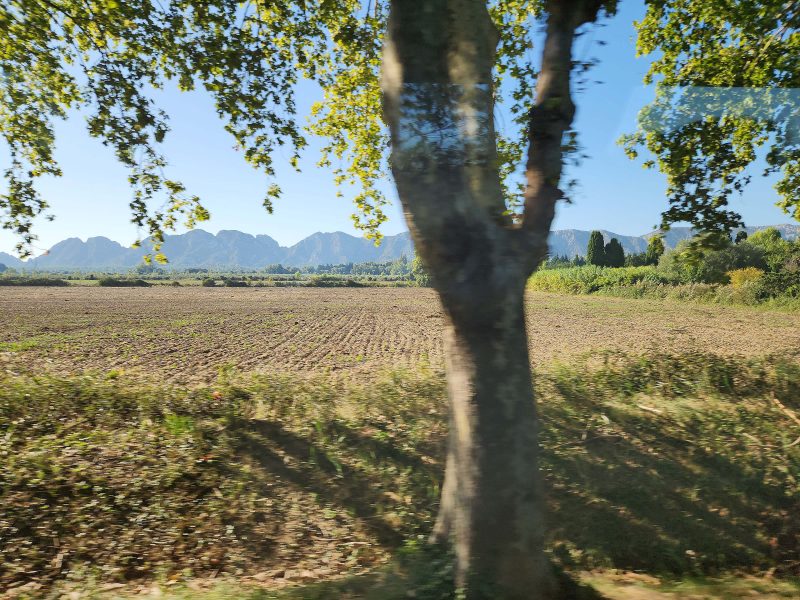
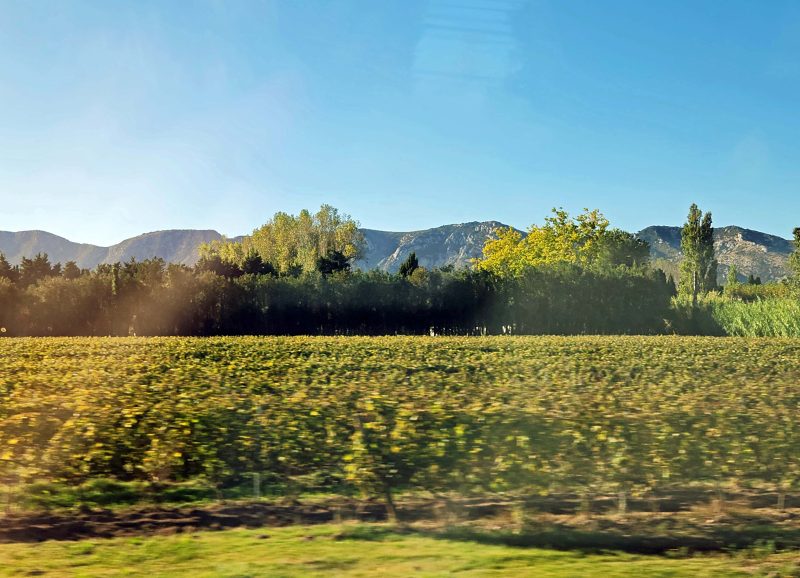
Along the way, our guide, Corina, told us about the Mistral—a cold and dry strong wind that blows from the north along the lower Rhône River valley toward southeast France and the Mediterranean Sea. The Mistral usually blows in winter or spring, but it can occur in any season. Its average wind speeds are about 30 mph, but it calms at night and usually lasts for only a single day. One of the effects of the Mistral is an unusually sunny climate in the Provence area. St. Louis has an average of 2,600 hours of sunshine per year (I checked); Provence averages 2,700-2,900 hours of sunshine per year because of the dry, clear air left behind the Mistral.
When we arrived in Saint Rémy, we began our walk around the village. It was early in the morning, and still cool in late September, so the cafés were pretty and inviting, but also closed and empty.
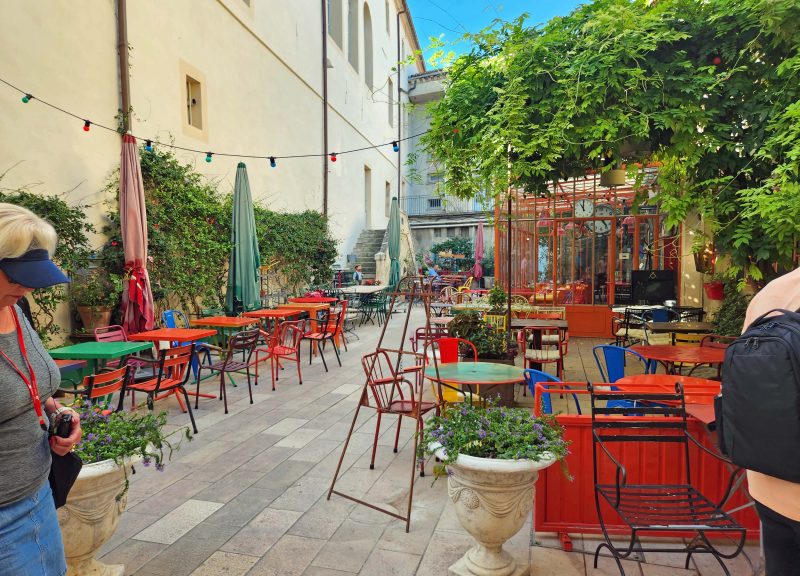
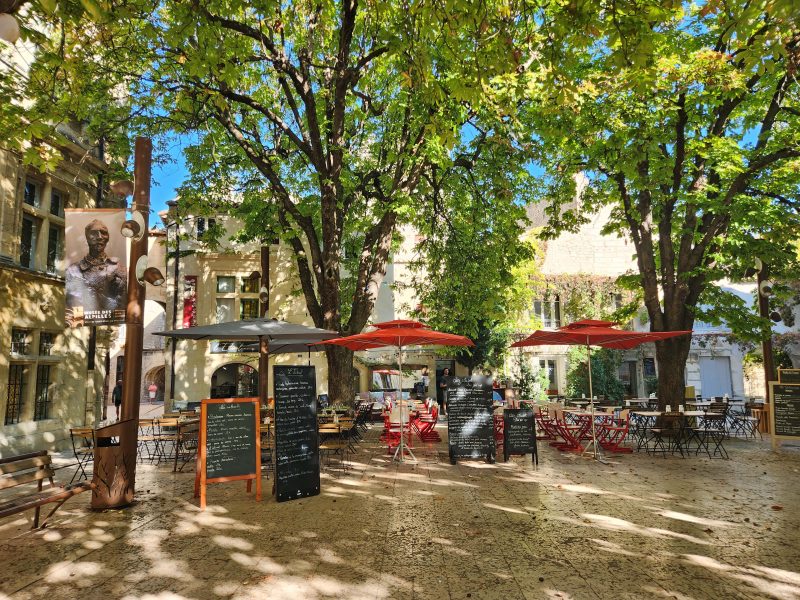
We toured a church in the village, but I don’t remember the name of it. As Corina said, “If you’ve been touring in Europe, you’ve already seen a lot of churches.” So true! They’ve all been beautiful, but they also blur together. The church names that Ted and I remember from our travels are those of the most unique buildings we’ve seen—and even then, we sometimes only remember the city in which we saw them. Here are some pictures of the not-to-be-named church we visited in Saint Rémy.
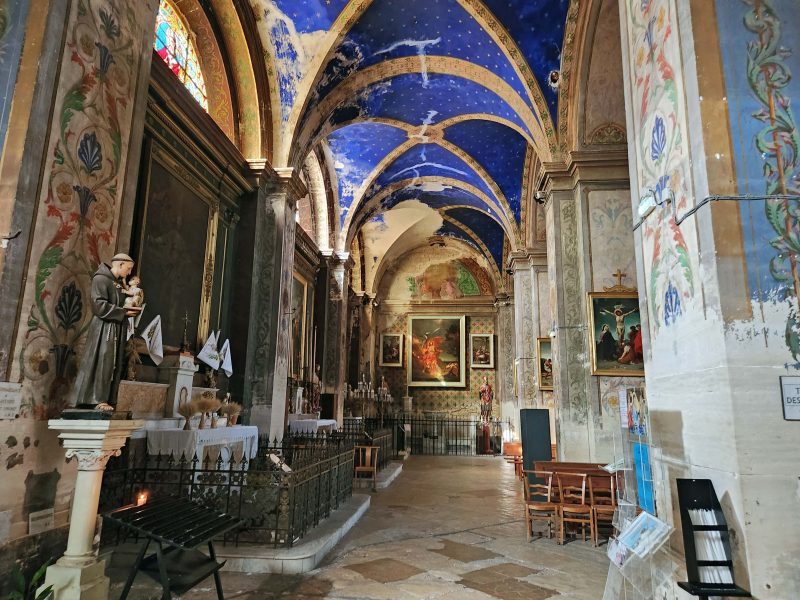


As we walked around the village, Corina pointed out this corner apartment (on the left). It is the birthplace and home of Nostradamus. Nostradamus was an astrologer and a physician. He wrote a mysterious book filled with prophecies and predictions that he published in 1555. The book earned him fame during and after his lifetime. He has been credited by his loyal followers for predicting pivotal historical events such as the French Revolution, the rise of Adolph Hitler, the September 11, 2001 attacks on the Twin Towers in New York City, and even the 2020 coronavirus pandemic. According to Nostradamus, the world will end in the year 3797. Get ready.

We walked through more of the village as we headed for the downtown area and the shops.
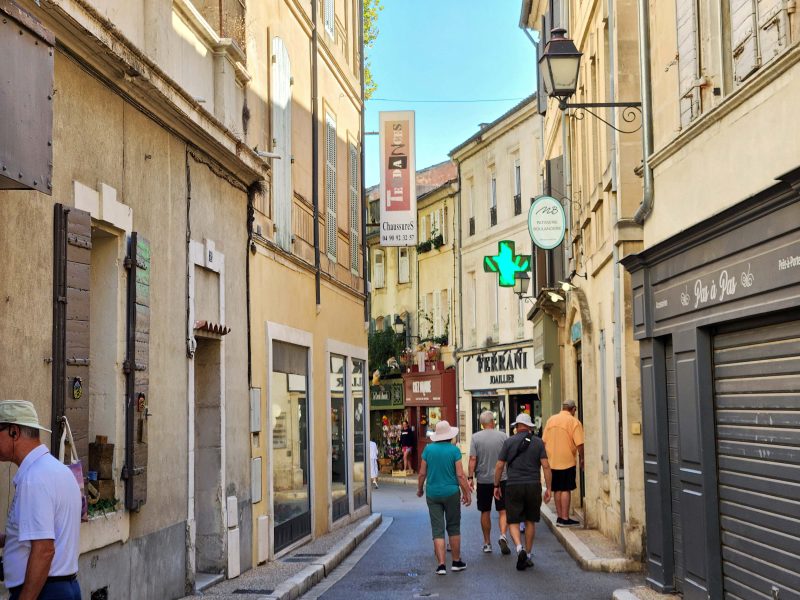
Not all the shops were open, but we entered one that was obviously part of the planned tour route. The proprietor told us about Marseille soap—which she sells in her shop. To tell the truth, Marseille soap is pretty amazing.
Just as genuine champagne can only be made using grapes grown in the Champagne region of France, genuine savon de Marseille (Marseille soap) can only be made in the Marseille region, and it must be made using the ancient and natural processing methods developed in the 1600s. The soap is 100 percent natural and is gentle enough for bathing babies and for irritated skin. In fact, dermatologists often recommend it to treat skin conditions such as eczema and psoriasis. It works well on the body as a facial cleanser, make-up remover, shaving cream, shampoo, toothpaste, wound and burn treatment, and for pet soap. Around the house, it can replace most household cleaners for cleaning surfaces and floors (even stone floors), dishwashing, and laundry, and it is also an excellent stain-remover and moth-repellent for clothing. Surprise! In addition to cleaning baby skin and wounds, it’s an effective insecticide and can be used as an agricultural pesticide.
To recognize authentic Marseille soap, look for the following:
- It has only 7 ingredients, 72 percent of which are vegetable oils, including olive oil. The other ingredients are soda, sea salt, and fresh water. There are no preservatives or coloring.
- It comes in only three colors: olive green, brown, or beige. No dye is added, so the color comes from the oils.
- The soap will be stamped with the logo of the Marseille soap-makers’ alliance and will always carry the words “72% HUILE (oil).”
- It has no additives, so there is little smell except possibly a hint of olive oil. The light smell of olive oil dissipates when the soap is wet.
- It is rinsed so many times that it is “extra fine” and will not cause allergies or sting your eyes when you use it.
At our bus pick-up point in Saint Rémy, we saw these Roman ruins. This was originally the Mausoleum of Glanum, a monument erected between 30 and 20 BC. Corina grew up in Saint Rémy and, when we passed the ruins of a Roman building (the frame of a house), Corinne told us that when she was little and on a school field trip, she visited those ruins and others around the village. She asked her guide why the Romans never completed their buildings because she didn’t understand that what she saw was the remains of something larger. That’s kind of how Ted and I are feeling after seeing so many ruins in such a concentrated period of time. We might be “ruined.” (Insert groan here.)
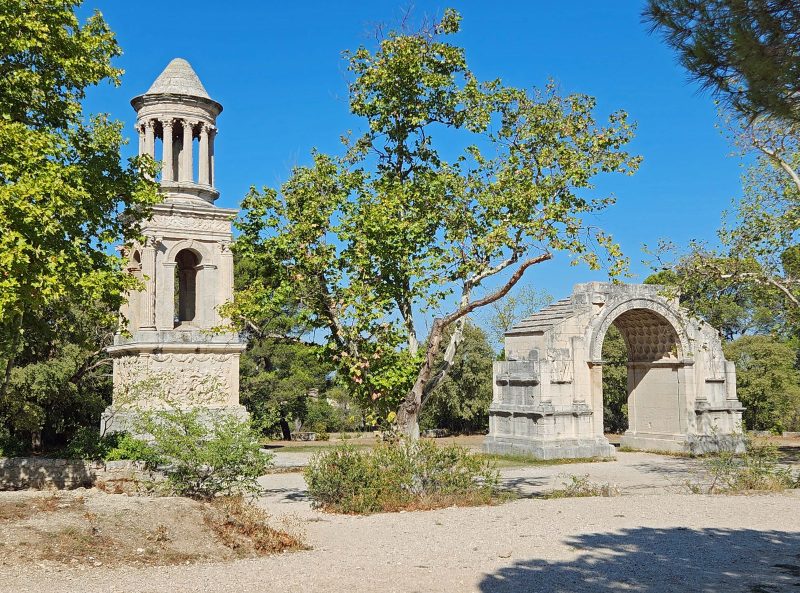
After our time in the village, we drove to the outskirts of town to visit the psychiatric hospital of Saint Rémy, located in the monastery of Saint-Paul-de-Mausole. The building still serves as a hospital, but not for psychiatric patients. Vincent van Gogh admitted himself to this hospital and spent one year in it as a patient. Despite his unstable mental health at the time, he was very productive and completed about 150 paintings during that year. His time in the asylum did not cure him as he had hoped it would, and he died by suicide shortly afterward.
At the entrance gate is a statue of van Gogh holding a sunflower. He loved sunflowers and planted some in the garden behind the hospital. I doubt if the sunflowers in my photo are those planted by van Gogh 130 years ago, but they were pretty.
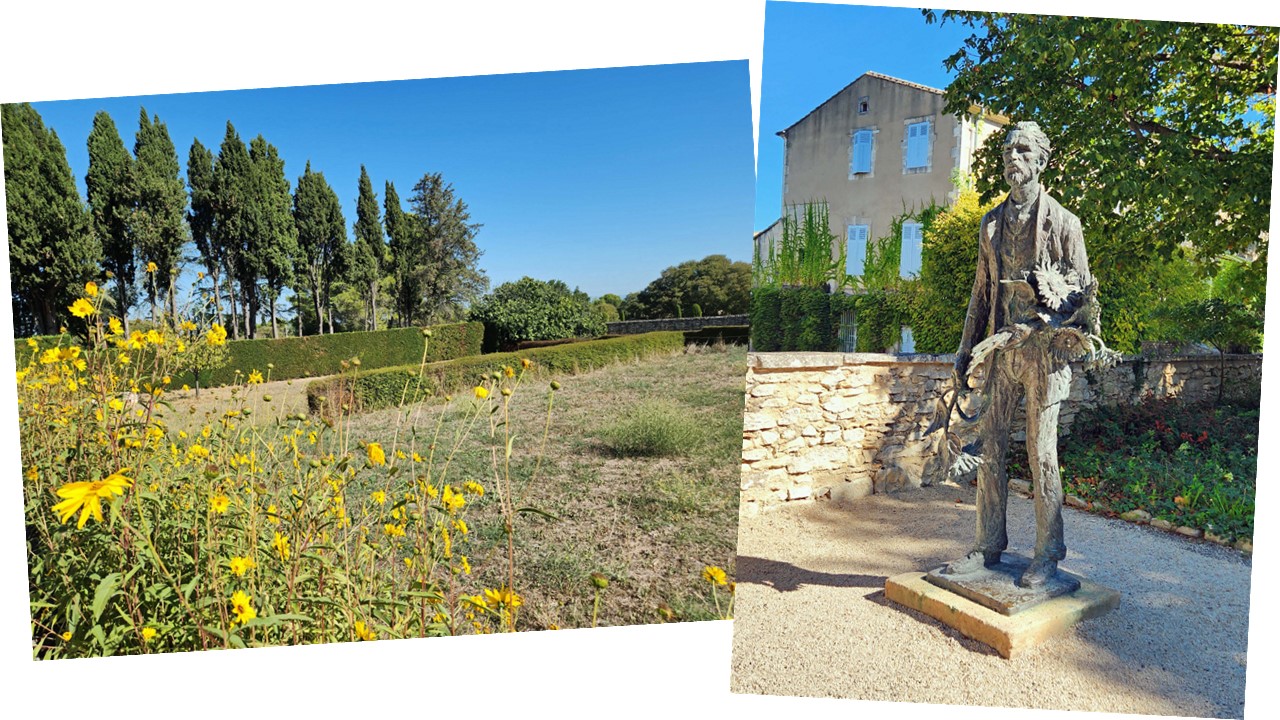
As we walked from the entrance along the path to the asylum door, we passed a display of replicas of van Gogh’s paintings. These two have always been my favorites.
“Starry Night”
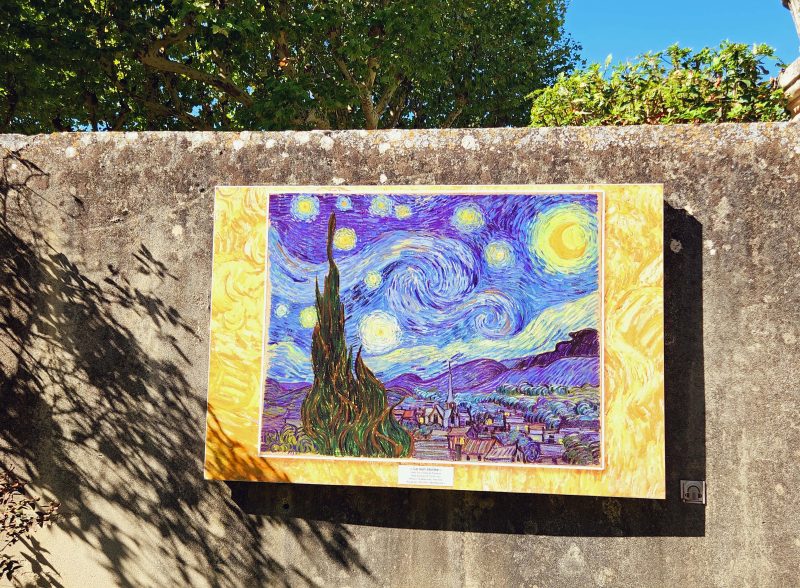
“Irises”
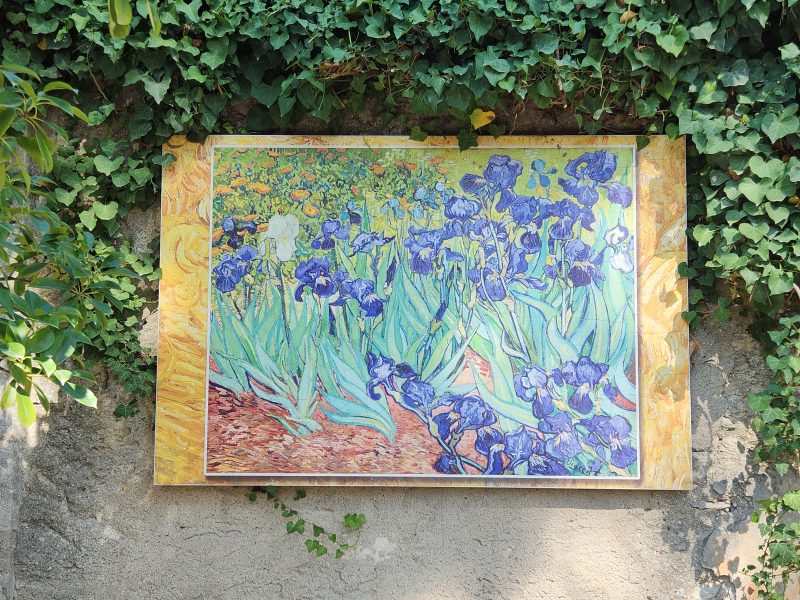
Some of the scenes van Gogh painted were visible along the path to the building entrance. They were set at the scene van Gogh painted, and each had an explanatory plaque that included a picture of van Gogh’s painting for visitors to compare with the current landscape.
“Olive Grove”
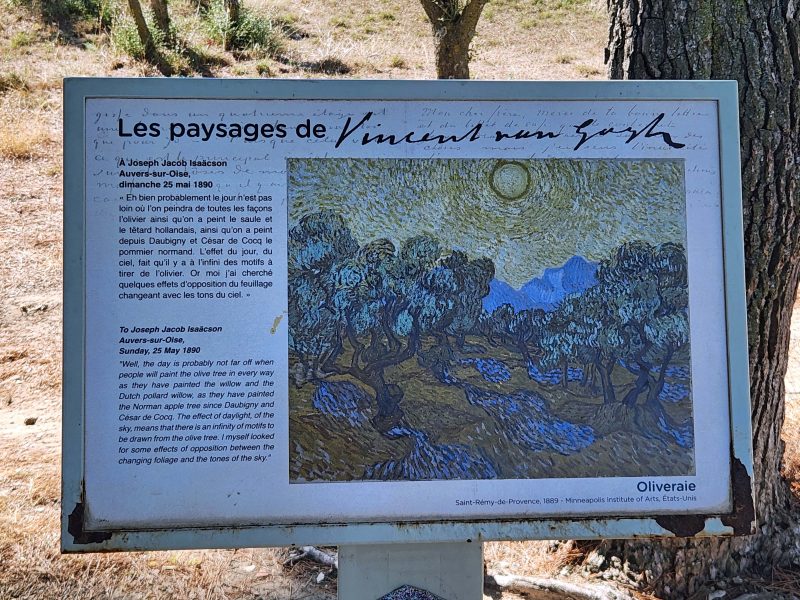
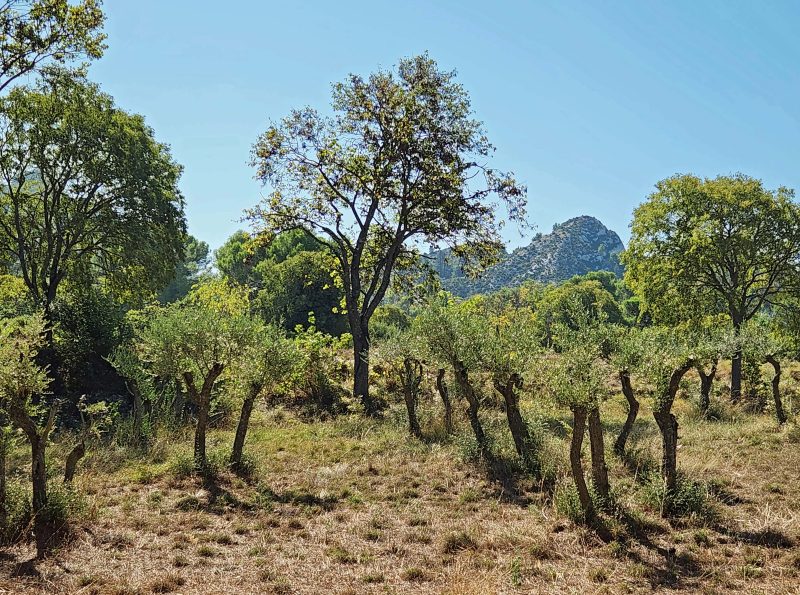
“The Alpilles (mountain range) with Olive Trees”
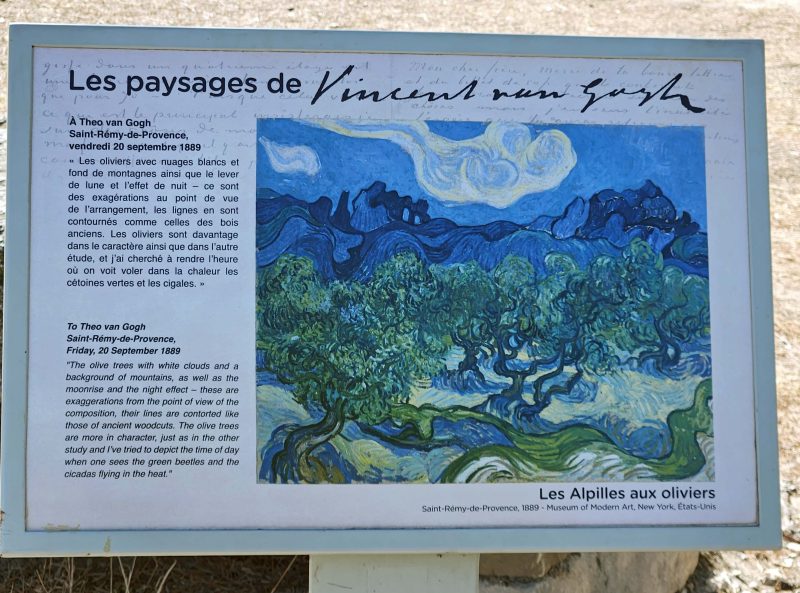
Sorry, no clouds in the sky today to match the original.
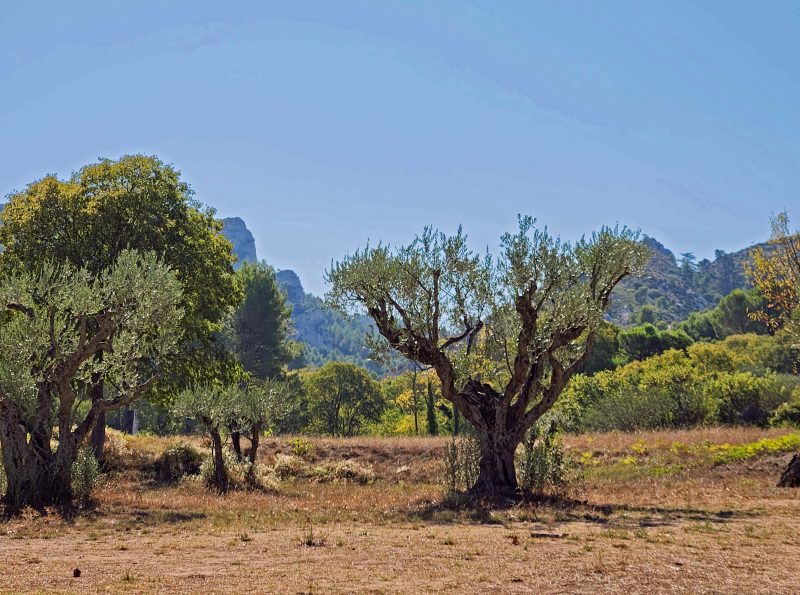
“First Steps”
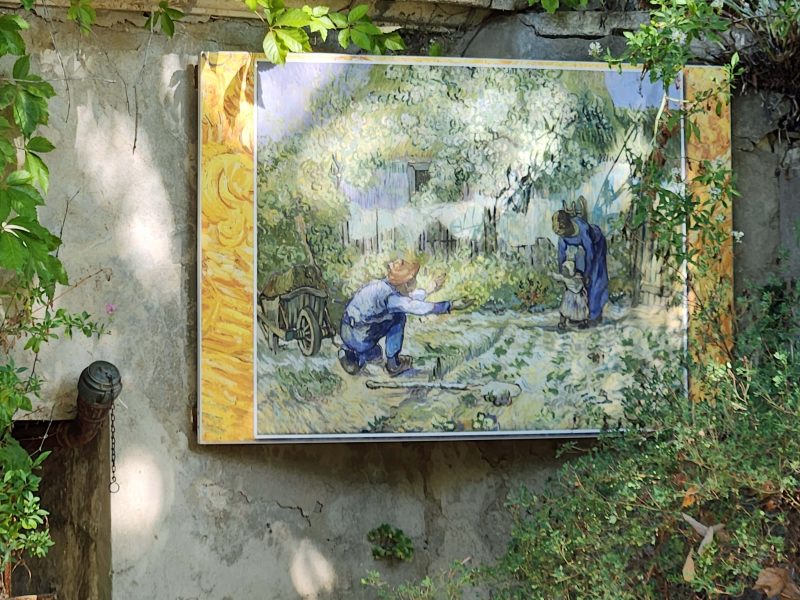

“Bedroom” (This was van Gogh’s room in the hospital.)
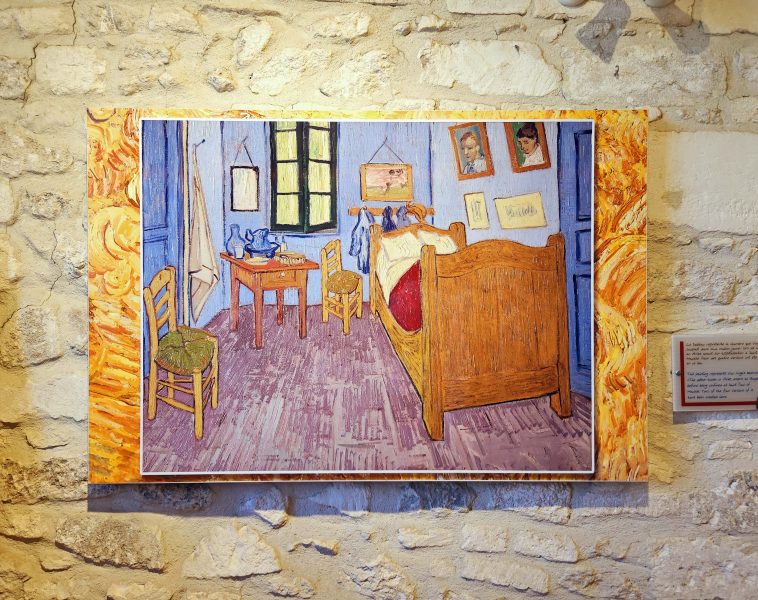
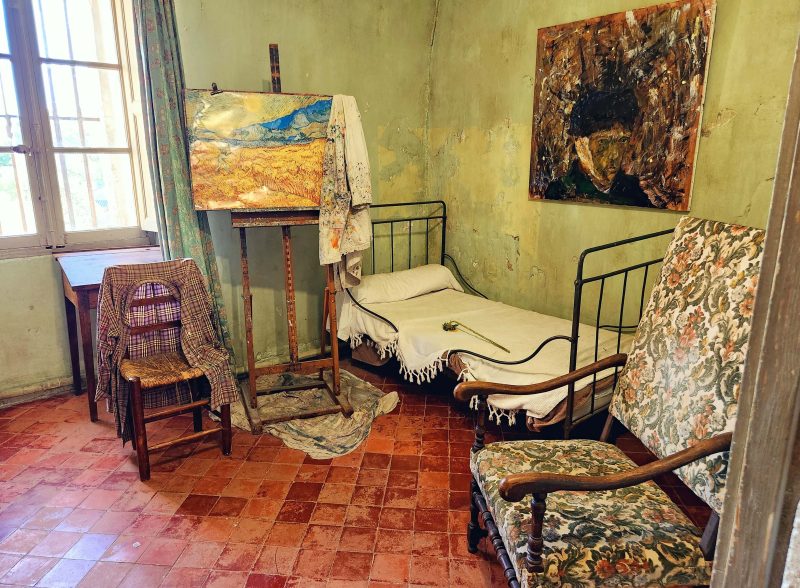
The hospital/museum has a pretty courtyard.
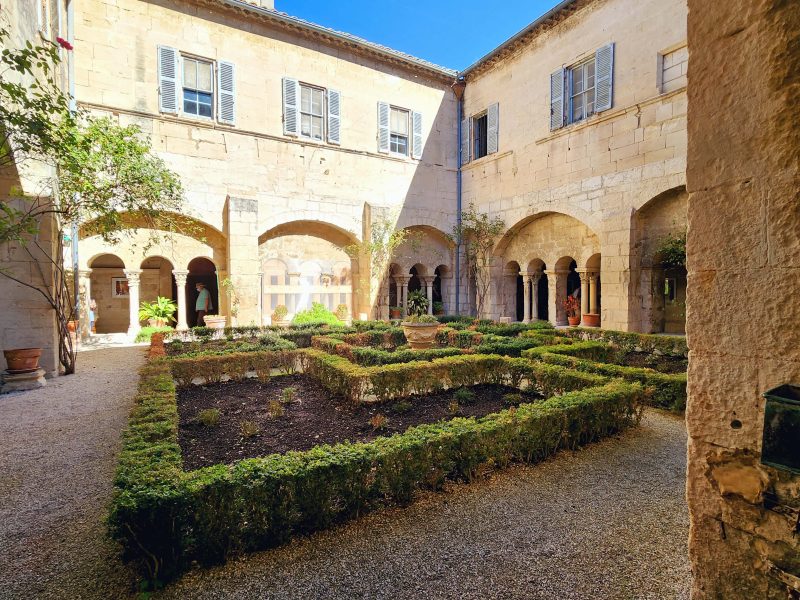
Here’s a copy of van Gogh’s self-portrait. In addition to the outdoor replicas of van Gogh’s paintings, there was a gallery of his work inside the building.

What we thought would be a ho-hum morning turned out to be a relaxing walk around a friendly village and a chance to look at beautiful art by a renowned artist. When we returned to our stateroom, we smiled when we saw a complimentary three-ounce bar of Marseille soap. Now it’s decision-making time: What shall we use it for?
